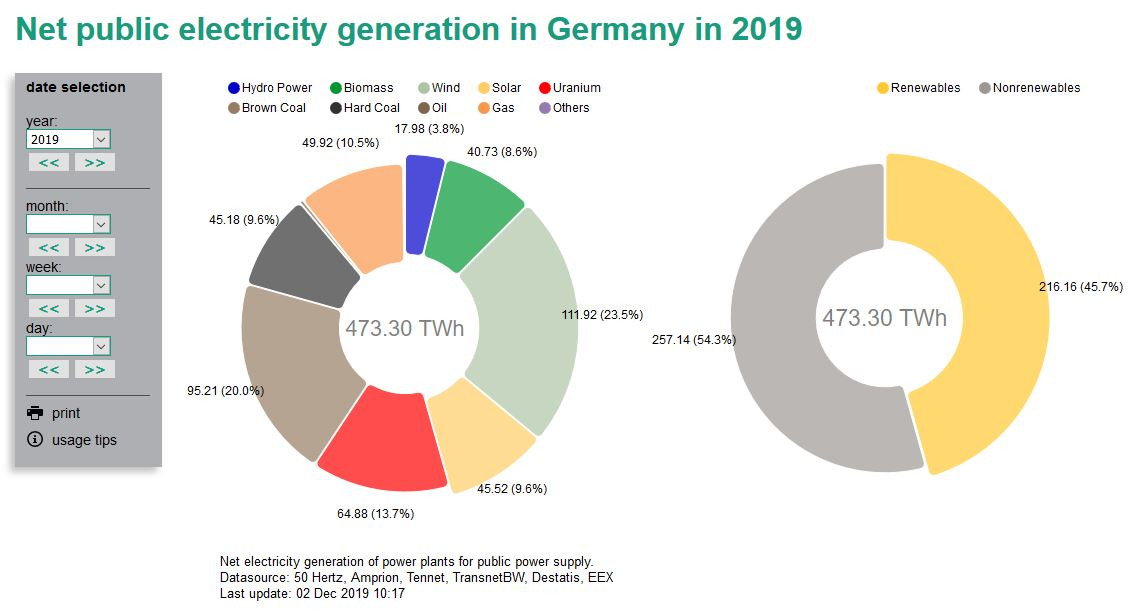Renewables overtake fossil fuels in Germany's annual power production for first time
Power production with renewable energy sources is set to overtake fossil energy sources over the course of a whole year for the first time in 2019, according to calculations undertaken by the research institute Fraunhofer ISE. "In the first eleven months of this year, renewable energies in Germany already generated 24 TWh (terawatt hours) more electricity than fossil energies," Fraunhofer ISE professor Bruno Burger wrote on Twitter, adding that this meant renewables will be ahead of fossil fuels in net electricity generation for the first time. According to energy charts on Fraunhofer ISE's website, renewables have so far accounted for nearly 46 percent of Germany's electricity production this year. The website does not include data on the amount of power the generating facilities consume themselves to operate, or the power German industry produces and consumes without it being fed into the public grid. Fraunhofer ISE says their data represents the power mix that actually supplies German homes.
Energy company E.ON said wind power production in Germany had already reached a new record level, supplying a total of 108,000 gigawatt hours (GWh) to the grid in the first eleven months 2019. Due to tropical storm "Sebastien" at the end of November, wind power production in the country had reached 38.5 gigawatts. The company says 2019 has so far been a particularly windy year in Germany, which helped the country reach the new record level in wind power production. With one month to go before the end of the year, renewables in Germany have already produced ten percent more electricity than in the year before.
While power production with renewables is reaching new record levels in Germany, the continued expansion of renewable energy installations is at risk, primarily due to difficulties in licensing of onshore wind power turbines. The number of new installations has reached the lowest level in almost 20 years and a planned minimum distance law for new turbines from residential areas could substantially shrink the available land area for new turbines. The government's goal is to achieve a share of renewables in power consumption of 65 percent by 2030, but critics say this will not be possible if the restrictions on turbine construction are implemented.


